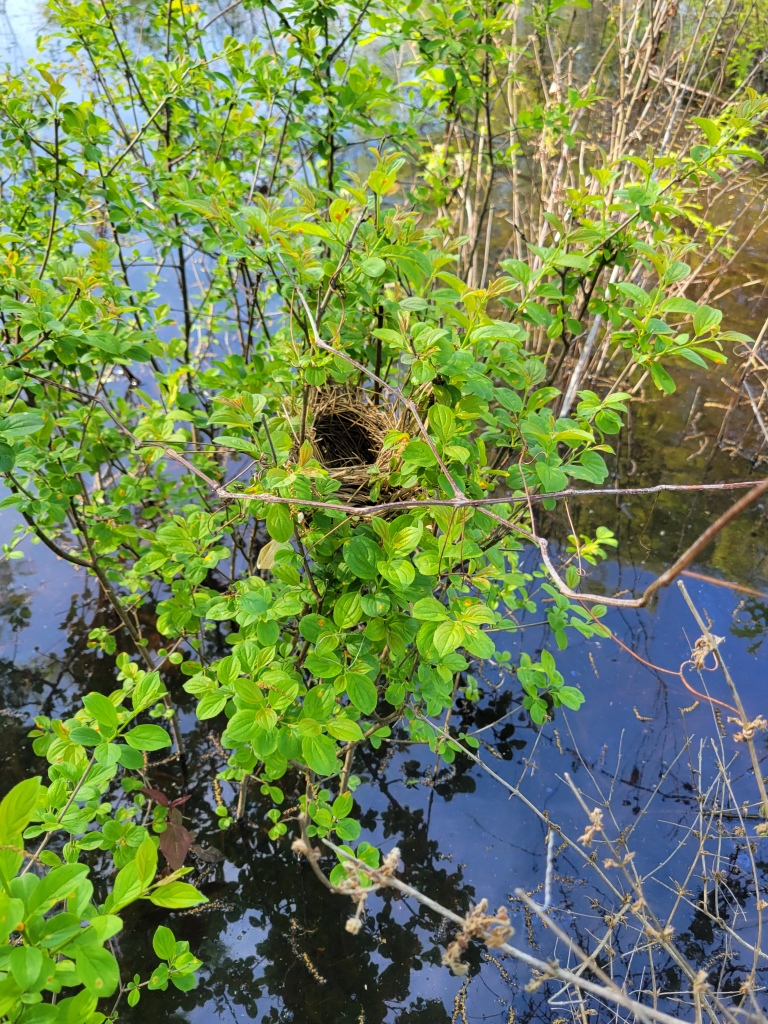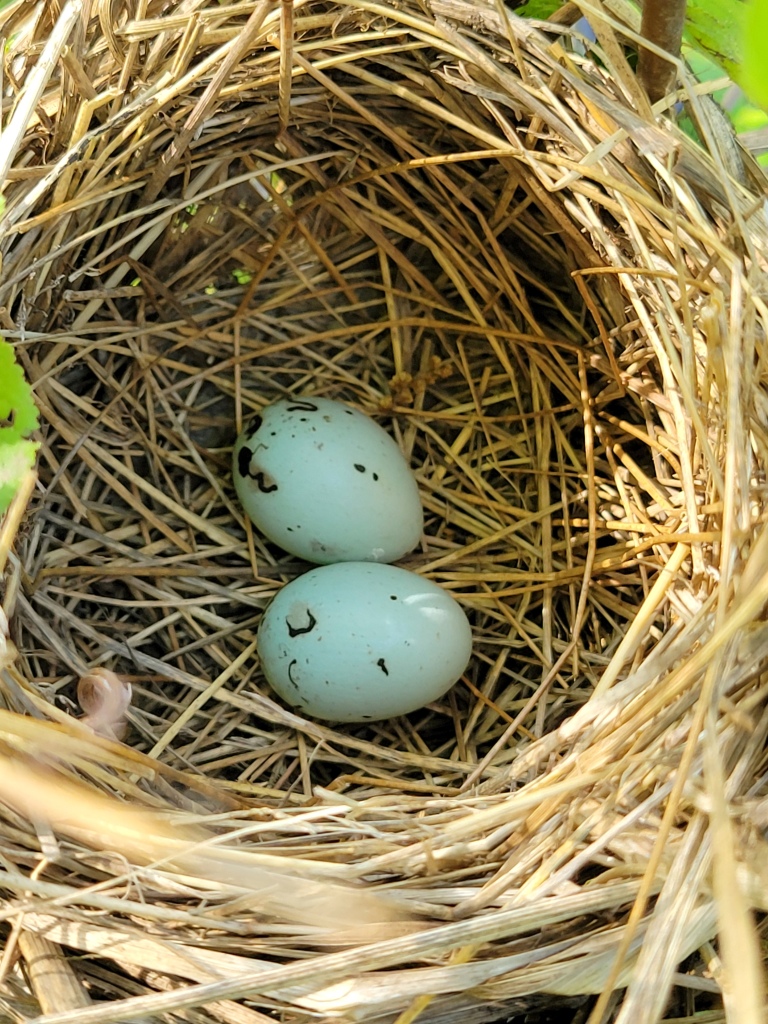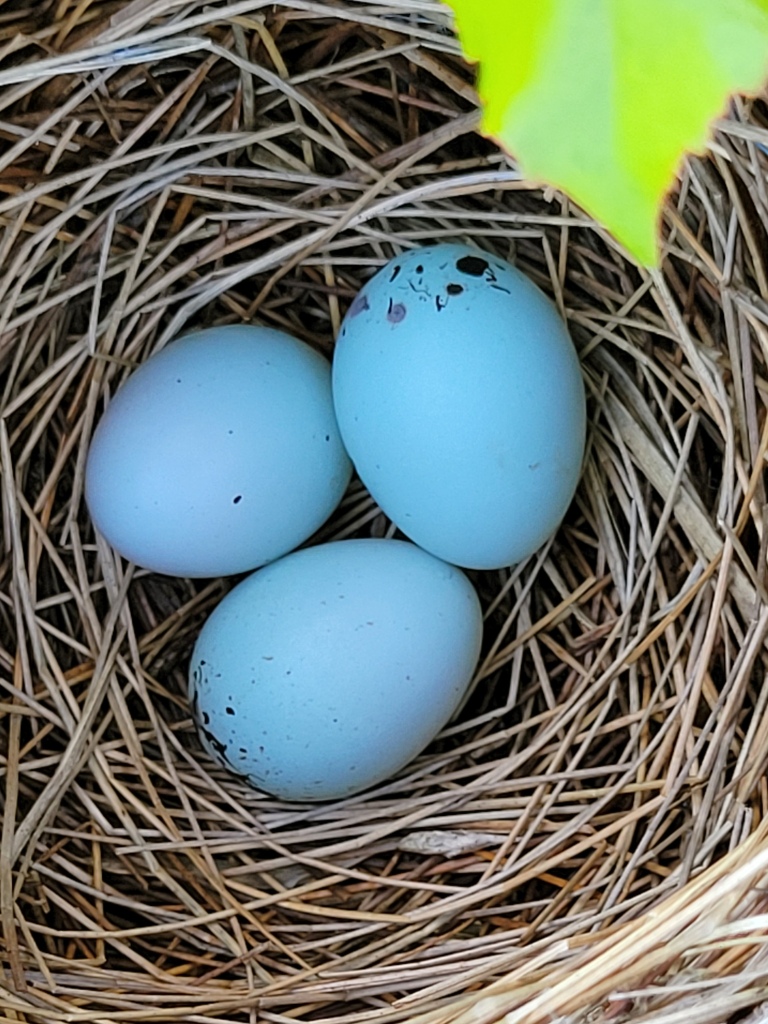Leonard Weber
May 12, 2024
The Red-winged Blackbird is a common and well-known bird in southern Michigan that is usually found near water. It arrives annually in Eliza Howell Park in March. It is a short-distance migrant, spending the winter as far north as Ohio.
The males arrive first and establish their breeding territories.

Photo courtesy of Margaret Weber
The females, which do not have the red patches and are not as well known, arrive a couple weeks later.

Photo courtesy of Margaret Weber
Early May seems to be the peak of their nesting time here.
This year, perhaps because there is more standing water in the park, the numbers appear to be up and their nests are easier to find.
Nest # 1 was made in a shrub growing in a wetland, about 2 feet above a foot of water.

Having watched, from a distance, the construction of the nest and having a sense of when the female had probably started laying eggs, I timed my visit for a close-up look for a time when the clutch was not yet complete and she was not yet incubating — and when she was not visible around the nest. This is a less disruptive time.
The nest contained two eggs (a typical full clutch is 4).

Nest # 2 was made in a different park of the park, near the meadow pond, and was only about a foot above a couple of inches of standing water.


and the pond.
After confirming that the female was not on the nest, I also approached this nest for a quick look and a couple photos. The nest had 3 eggs.

The first picture was taken in the sunshine. Then I shaded the nest by blocking the sun with my body. Note how the color of the eggs, the same three eggs, appears so different as a result.

I did not approach a third nest that I spotted because the female was always near the nest and would have been quite disturbed by my presence.
Almost all of us who have gotten close to a Red-winged Blackbird nest, intentionally or not, have had the experience of being visited by a male flying right over our heads and calling loudly, telling us to leave immediately. I tend to pay more attention to the female blackbird than to the male in deciding whether / when to check a nest, but this behavior of the male does serve as a good reminder that it important to be careful.

A few days later, my colleagues and I noticed that the female was not on Nest # 2 when it should have been incubation time. And the male was not protecting the immediate area. So we walked out to take a look. The nest was empty, with one damaged egg floating in the water.

It’s not possible to know exactly what happened, but a reasonable guess is that one of many different bird egg predators (which include some mammals, some birds, and some snakes) consumed the eggs.
Making a study of the nesting birds of Eliza Howell Park in recent years has taught me how often nests are unsuccessful, for a variety of different reasons.
Bird nesting behavior is fascinating, but it is definitely not easy being a bird!
Leave a comment